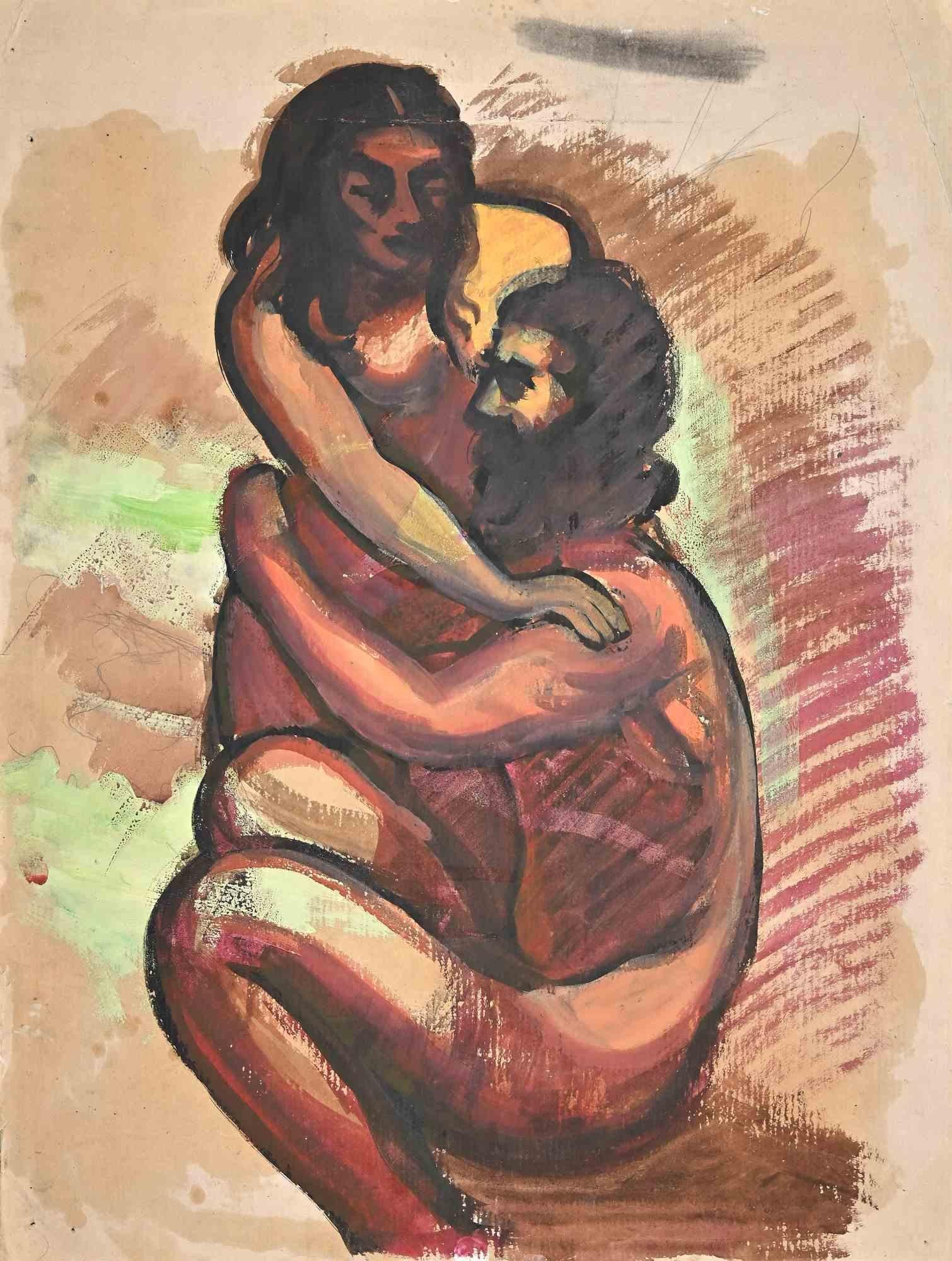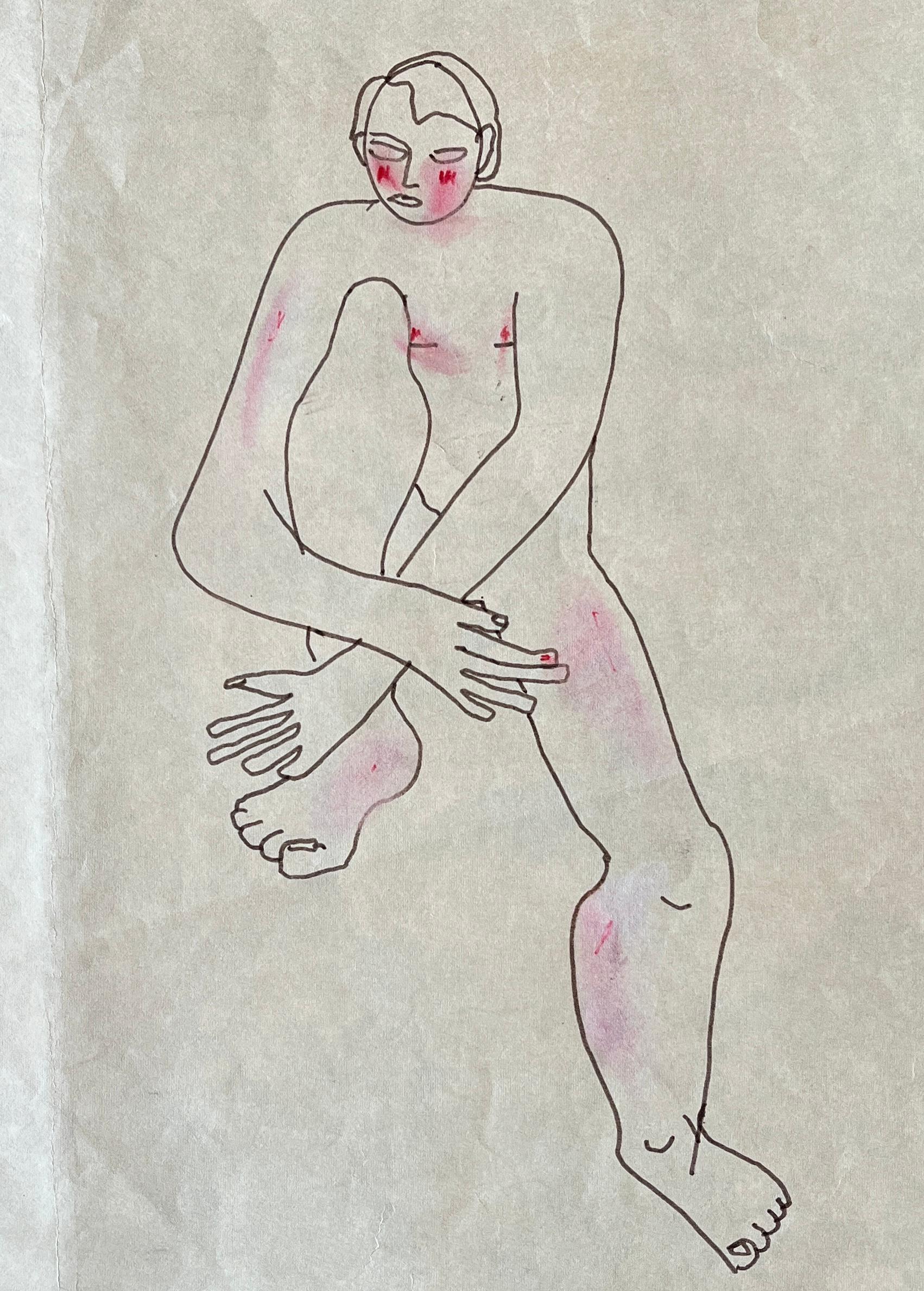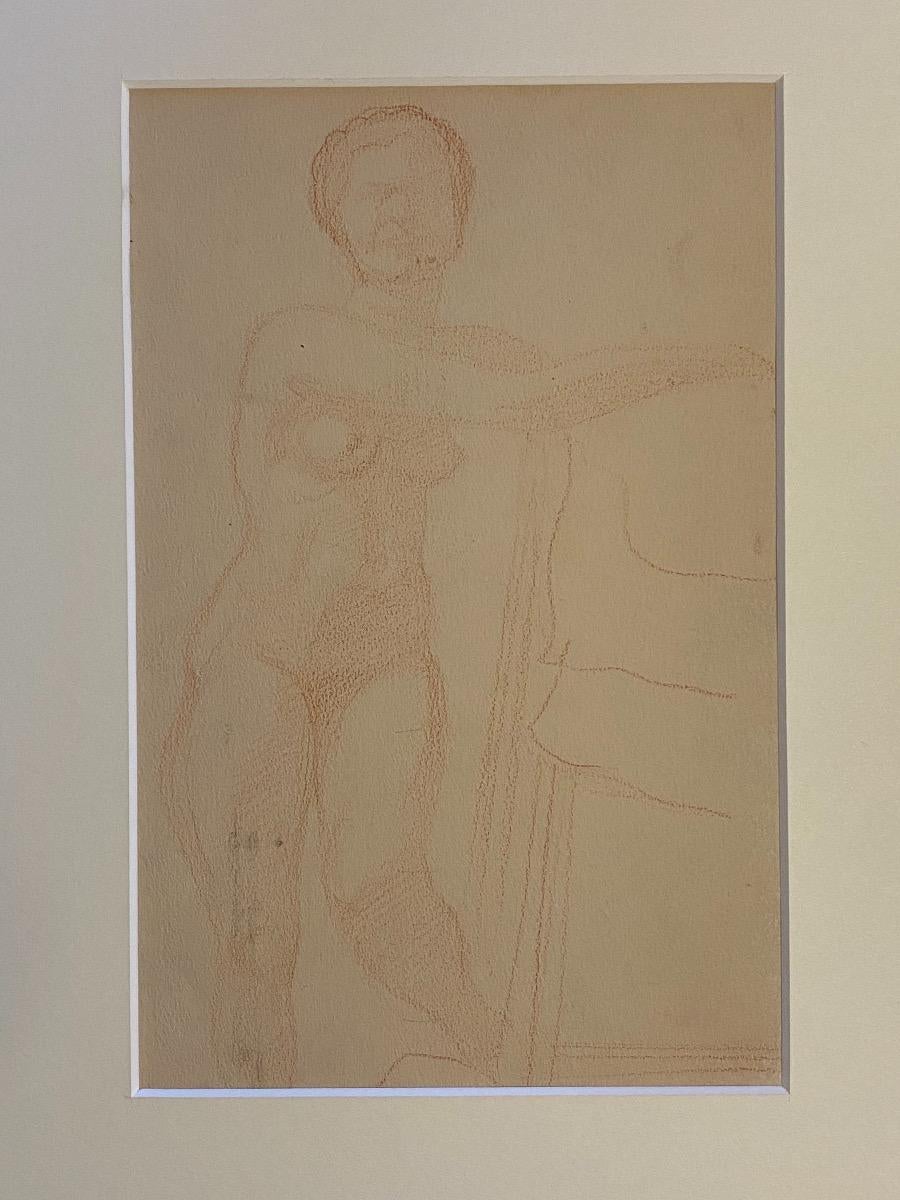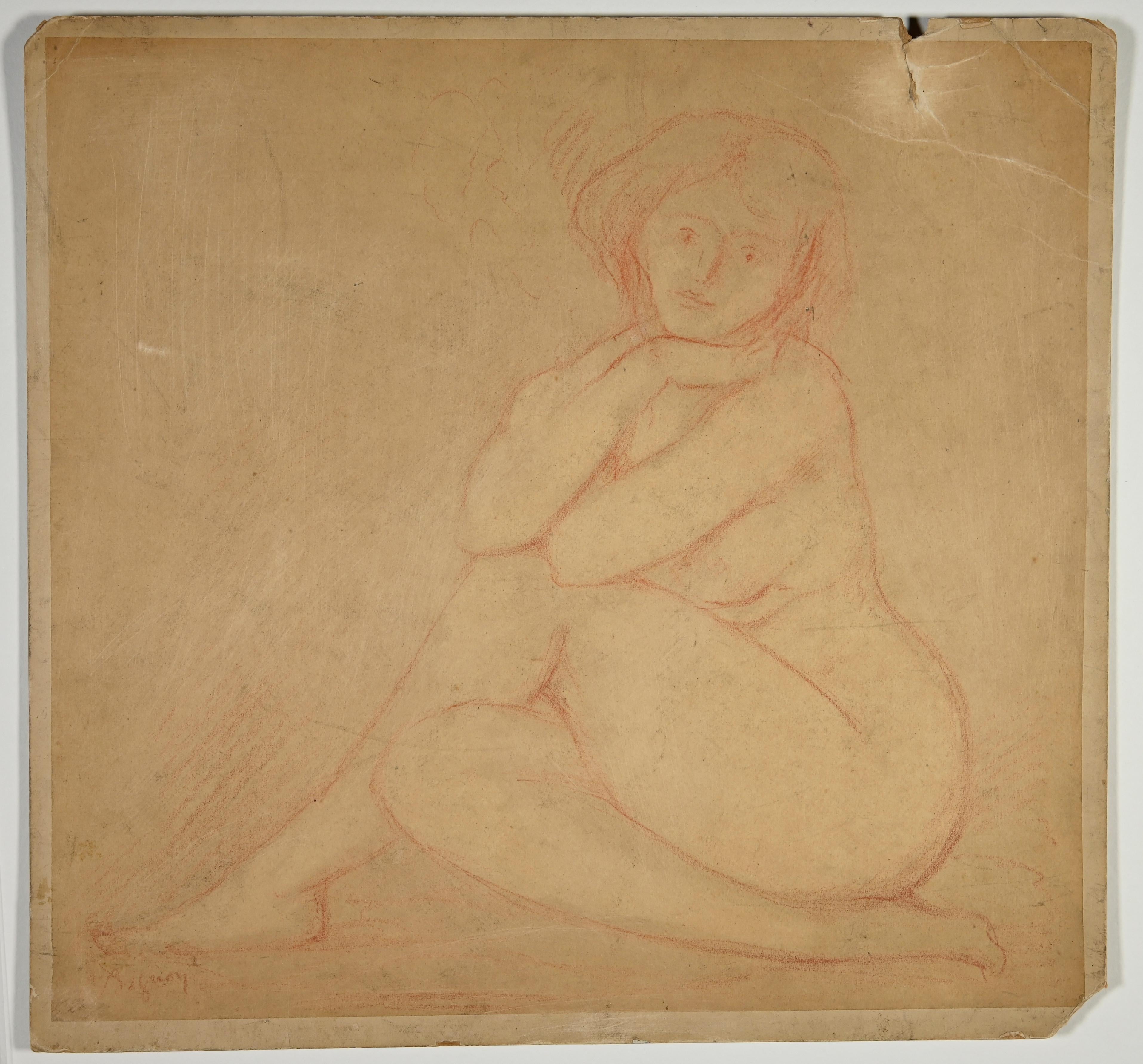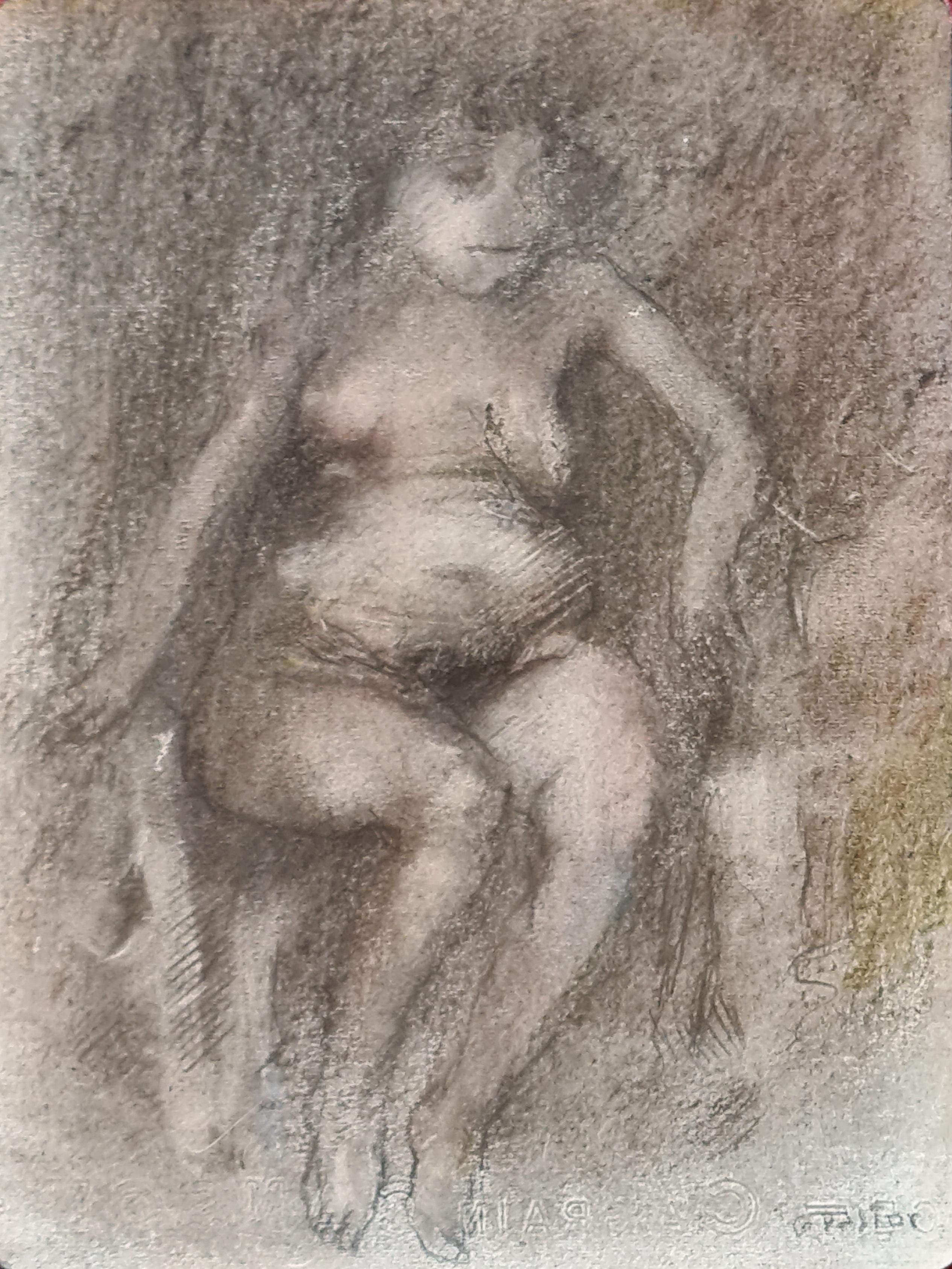Pablo PicassoHomme à l'agneau, mangeur de pastèque et flûtisteExecuted on 3 February 1967
Executed on 3 February 1967
About the Item
- Creator:Pablo Picasso (1881-1973, Spanish)
- Creation Year:Executed on 3 February 1967
- Dimensions:Height: 32 in (81.28 cm)Width: 37.75 in (95.89 cm)
- Medium:
- Movement & Style:
- Period:
- Condition:
- Gallery Location:New Orleans, LA
- Reference Number:
Pablo Picasso
One of the most prolific and revolutionary artists the world has ever seen, Pablo Picasso had a tremendous impact on the development of 20th-century modern art. Although he is best known for his association with the Cubist movement, which he founded with Georges Braque, Picasso’s influence extends to Surrealism, neoclassicism and Expressionism.
“Every act of creation is, first of all, an act of destruction,” the Spanish artist proclaimed. In Picasso's Cubist paintings, he emphasizes the two-dimensionality of the canvas, breaking with conventions regarding perspective, foreshortening and proportion. Picasso was inspired by Iberian and African tribal art. One of his most famous pre-Cubist works is Les Demoiselles d’Avignon (1907), a painting considered immoral and shocking at the time for its depiction of nude women whose faces resemble Iberian tribal masks.
Picasso made many portraits in this style, most often of the women in his life, their expressively colored faces composed of geometric shards of surface planes. In Woman in a Hat (Olga), 1935, he painted his first wife as an assemblage of abstract forms, leaving the viewer to decipher the subject through the contrasting colors and shapes. Picasso was a tireless artist, creating more than 20,000 paintings, drawings, prints, ceramics and sculptures. Tracing his life’s work reveals the progression of modern art, on which he had an unparalleled influence.
Browse an expansive collection of Pablo Picasso's art on 1stDibs.
- ShippingRetrieving quote...Ships From: New Orleans, LA
- Return PolicyThis item cannot be returned.
- La femme préhistorique (Prehistoric Woman)By James Jacques Joseph TissotLocated in New Orleans, LAJames Tissot was among the most successful and critically acclaimed artists of the Victorian era. Although the artist is celebrated for his elegant scenes of fashionable life in Paris and London, this work is a fascinating rarity within his oeuvre. In this monumental pastel, Tissot depicts a prehistoric woman draped in a tiger skin, presented with a striking pose and heroic air. His delicate portraiture, combined with his fascination with conveying texture, demonstrates why he was one of the most revered artists of his generation, and La femme préhistorique illustrates the remarkable technique for which he was renowned. This work was completed in preparation for a series of works exploring the Old Testament undertaken by Tissot from 1899-1902 that remained unfinished at the time of his death. A portion of this series focused on illustrations of Adam and Eve, and among these sketches were images of a nude Eve partially draped in animal furs. Towards the end of his life, following his conversion to Catholicism, biblical subjects became important to the artist. A few years before this work was completed, Tissot embarked upon a highly ambitious group of nearly 300 watercolors illustrating the New Testament, presenting the illustrated epic in its entirety at the Paris Salon of 1894. Both of these series were a critical artistic departure for the artist, stemming from a desire to create works separated from his typical images of modern society. This pastel imagines Eve as the prototype of womanhood in the guise of a prehistoric woman. Tissot rarely painted the nude, and his skill as a draftsman highlights the figure's natural beauty, contrasting it with the stark landscape surrounding her. Although a study, this monumental work is incredibly well-finished and highly engaging, with the statuesque model commanding the majority of the canvas. Her pose is strong and theatrical, and she addresses the viewer with a direct, confident gaze. The imagined historical subject of this drawing is grounded by Tissot’s exceptional attention to detail. A master of conjuring an array of textures, Tissot showcased this ability in this work by juxtaposing many types of fabrics and natural elements within one composition. The tiger skin with which the woman partially covers herself was a favorite studio prop of Tissot’s, appearing in many of his most influential works from the period, including several paintings of his partner and favorite model Kathleen Newton. It, in particular, showcases the artist’s understanding of texture, yet it also serves as an exotic element that elevates the sensuality of the scene when placed against the woman’s bare skin. Born in 1836 in the port town of Nantes, Tissot traveled to Paris at the age of 20 in order to join the studios of Hippolyte Flandrin and Louis Lamothe. During this period, he became close with James Abbott McNeill Whistler, Edgar Degas and Edouard Manet, and the impact of these friendships is reflected in his portraits of modern life. Having enjoyed considerable success in Paris during the 1860s, Tissot fought in the Siege of Paris, and after the fall of the Commune in 1871, he went to London, where he stayed for the next ten years. He was met with incredible success there, and he also met the love of his life, Kathleen Newton, a divorcée, with whom he lived from about 1876 until her death in 1882. Today he is regarded among the great masters of Belle Époque painting, and his works can be found in important collections worldwide, including the Metropolitan Museum of Art, the Brooklyn Museum, the National Gallery of Art, the Musée d’Orsay, the Tate Gallery and many others. This pastel remained in Tissot's private collection until his death in 1902 and is referenced in the posthumous 1902-3 valuation of Tissot's home at 64 avenue du Bois...Category
Early 20th Century Academic Nude Drawings and Watercolors
MaterialsLaid Paper, Canvas, Oil Pastel, Pastel
- Study for “L’Acropole”By Paul DelvauxLocated in New Orleans, LAPaul Delvaux 1897-1994 Belgian Study for “L’Acropole” Signed and dated "P.Delvaux 1965" (lower right) Watercolor, pen and ink on paper This preliminary drawing for Paul Delvaux’s greatest masterpiece L’Acropole, which resides today in the Centre Pompidou in Paris, features the artist’s most beloved subject — mystical scenes of nude women. A centrally-placed, stoic woman draped in a long green gown stands with her arms outstretched by her sides. She gazes at another idealized woman in the foreground, lying nude on a chaise lounge, while behind her, multitudes of other women in white dresses undertake a long procession towards a distant door. The captivating scene exudes the unique Surrealist style for which the artist has become known. With this skillful rendering of the surreal setting, Delvaux has mastered depicting nude women in a sensual yet non-erotic manner. The artist drew inspiration from a variety of sources, including the futuristic writings of Jules Verne and the mythos of Homer, and blended them with his subconscious themes, which frequently included the nude female form. In combination with the loose concepts of form and perspective found in the 16th-century Mannerist paintings that Delvaux studied in Italy before World War II, his distinctive style served to create memorable dreamscapes without veering into lewdness. Like the very best Surrealist images, the work is both innovative and engaging. Paul Delvaux's earliest and most lasting influences in his art were the futuristic writings of Jules Verne and the mythos of Homer. After completing his initial artistic training at the Académie Royale des Beaux-Arts in Brussels, Delvaux exhibited with Surrealists Dalí...Category
20th Century Post-Impressionist Nude Drawings and Watercolors
MaterialsPaper, Ink, Watercolor, Pen
- Japanese Shunga, Sitting WomanLocated in New Orleans, LAA beautiful example of the Japanese art form known as shunga, this sensual work depicts woman exploring her sexuality. Hand-painted on paper with splashes of vivid gouache color, the...Category
Early 20th Century Other Art Style Nude Drawings and Watercolors
MaterialsPaint, Paper, Gouache
- Le Fondeur De Bronze By Lucien Lévy-DhurmerBy Lucien Levy-DhurmerLocated in New Orleans, LALucien Lévy-Dhurmer 1865-1953 French Le fondeur de bronze Signed "Levy Dhurmer" (lower right) Pastel on paper French painter Lucien Lévy-Dhurmer was one of the leading artists of...Category
Early 20th Century Post-Impressionist Figurative Drawings and Watercolors
MaterialsPaper, Pastel
- Musiciens Sur Fond Multicolore By Marc ChagallBy Marc ChagallLocated in New Orleans, LAMarc Chagall 1887-1985 Russian Musiciens sur fond multicolore (Musicians on a multicolored background) Signed 'Chag' (on the sleeve of the right figure); stamped with the signature 'Marc Chagall' (lower right) Tempera, gouache, colored ink and India ink and pastel on paper “The fact that I made use of cows, milkmaids, roosters and provincial Russian architecture as my source forms is because they are part of the environment from which I spring and which undoubtedly left the deepest impression on my visual memory of the experiences I have." - Marc Chagall Marc Chagall’s 1981...Category
20th Century Post-Impressionist Figurative Drawings and Watercolors
MaterialsPaper, Pastel, Ink, India Ink, Tempera, Gouache
- Danseuse By Pierre Carrier-BelleuseBy Pierre Carrier-BelleuseLocated in New Orleans, LAPierre Carrier-Belleuse 1851-1932 | French Danseuse Signed “Pierre Carrier-Belleuse” (lower right) Pastel on canvas Strikingly elegant, this extraordinary pastel by French impress...Category
19th Century Impressionist Figurative Drawings and Watercolors
MaterialsPastel, Canvas
- "Pink Cheeks" American Modernist Robert Gilberg 1950 Ink and Pastel Nude DrawingBy Robert GilbergLocated in Arp, TXRobert Gilberg (1911-1970) "Pink Cheeks" c.1950s Ink and pastel on paper 12"x13.75" unframed Unsigned Good Condition - Wear consistent with age and history. Deep creases on upper le...Category
1950s American Modern Figurative Drawings and Watercolors
MaterialsInk, Paper, Pastel
- Mary Frank Original Charcoal and Pastel 1984 Figure DrawingBy Mary FrankLocated in Larchmont, NYMary Frank (British/American, b. 1933) Chant, 1984 Charcoal and pastel on paper 41 3/4 x 29 3/4 in. Framed: 46 1/2 x 34 1/4x 2 in. Signed and dated lower right: Mary Frank 84 Midtown Payson Galleries Label Verso Mary Frank is known for creating stoneware sculptures that have the appearance of terra cotta fragments dug up at an archaeological site. Sometimes a half-finished relief head...Category
1980s Modern Nude Drawings and Watercolors
MaterialsPaper, Charcoal, Pastel
- Nude - Original Drawing by Jean Delpech - 1940sBy Jean DelpechLocated in Roma, ITNude is an original drawing in sanguine on paper, realized by Jean Delpech (1916-1988) 1940s. The state of preservation of the artwork is good. Passport...Category
1940s Modern Figurative Drawings and Watercolors
MaterialsPaper, Pastel
- Love - Drawing by Jean Delpech - Mid 20th centuryBy Jean DelpechLocated in Roma, ITLove is a drawing in watercolor and pastel realized in the Mid-20th Century by Jean Delpech (1916-1988). Good conditions with minor folding. The artwork is realized in harmonious ...Category
Mid-20th Century Modern Figurative Drawings and Watercolors
MaterialsWatercolor, Pastel, Paper
- Nude of Woman - Drawing by Emile André Leroy - 1930sLocated in Roma, ITNude of Woman is an artwok realized by the French Artist Emile André Leroy. Pastel Drawing on paper. Hand Signed in the left margin. Good conditions except fo a small tear in the r...Category
1930s Modern Nude Drawings and Watercolors
MaterialsPaper, Pastel
- Woman in a ChairBy Gilbert PastorLocated in Cotignac, FRLate 20th Century French drawing on Canson paper of a lady in a chair by Gilbert Pastor. Signed bottom left. In his distinctive style with some use of body col...Category
Late 20th Century Modern Figurative Drawings and Watercolors
MaterialsPaper, Crayon
Recently Viewed
View AllRead More
Science Uncovers Hidden Truths behind Young Pablo Picasso’s Blue Period
From 1901 to 1904, Picasso limited his palette to bluish hues in producing some of his most famous early works. A new show looks at the recycled materials, hidden underpaintings, surprising influences and bohemian lifestyle that led to their creation.
Who Are the Most Popular Artists on 1stdibs?
Learn the stories of some of the world's most recognizable artworks and their makers.
